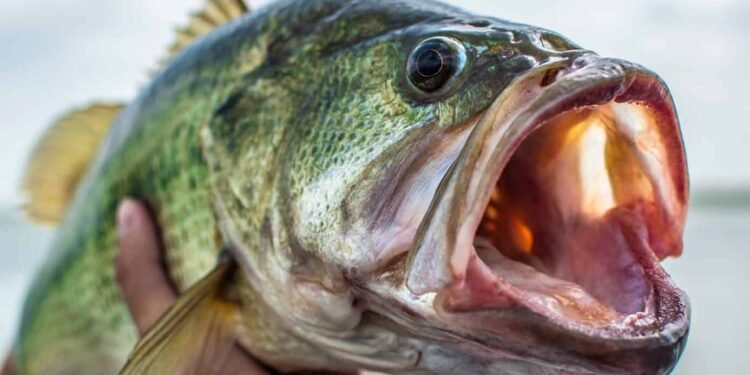Freshwater fishing enthusiasts often encounter various species of bass, each with its unique characteristics. While many anglers are well-acquainted with the art of bass fishing, one aspect of these fish might not always be at the forefront of their minds: teeth. Yes, you read that correctly! Like their saltwater counterparts, bass indeed have teeth, although they might not be as formidable as expected. In this article, we’ll explore the fascinating world of bass dentition, focusing on the question: “Do peacock bass have teeth?”
The Tooth Truth: Do Peacock Bass Have Teeth?
Most anglers, when asked if bass have teeth, might respond with a puzzled expression. It’s not surprising, as these tiny dental structures can be easily overlooked. To the naked eye, bass teeth are quite inconspicuous. You’d need to inspect them closely to notice their presence.
When comparing different bass species, you’ll find variations in the appearance of their teeth. Some bass species exhibit well-defined, pointed teeth, while others have a row of small, gritty spikes on their jaw. These spikes are reminiscent of rough sandpaper more than traditional teeth, but they serve the same crucial purpose.
The Purpose of Bass Teeth
So, why do bass have teeth, and what do they use them for? These seemingly unimposing teeth play a vital role in the bass’s survival as a predatory fish. They are primarily used for gripping and securing their prey, including smaller fish, insects, crayfish, and other aquatic creatures.
When a bass locates its prey, its sharp teeth hold onto it firmly. Once captured, the prey is then directed further into the bass’s mouth, where a second set of grinding teeth takes over the task of processing and breaking down the meal. This process allows bass to efficiently consume a wide range of prey items, ensuring survival in their freshwater habitats.
The Enigmatic Peacock Bass
While all bass species share this dental characteristic to some extent, one species stands out with its unique dental features: the peacock bass. Peacock bass, often sought after by dedicated anglers for their striking appearance and challenging fights, possess teeth that are noticeably angled inwards towards the throat of the fish. Moreover, their jaw strength surpasses that of many other bass species, adding an extra layer of complexity when handling them.
Safe Handling of Bass
Now that we’ve established that bass, including peacock bass, indeed have teeth, it’s essential to understand how to handle these fish safely without getting bitten. Fortunately, unlike sharks or other toothy predators, bass teeth are designed more for gripping prey than tearing it apart. As a result, holding a bass can be a relatively safe and straightforward process.
When you’ve successfully landed a bass, whether it’s a largemouth, smallmouth, or peacock bass, here are some guidelines to follow for safe handling:
1. Thumb Inside the Mouth
One common technique for holding a bass is to place your thumb inside its mouth. This approach is generally safe, as bass teeth are not large or sharp enough to cause serious harm to your thumb. However, keep in mind that the fish may thrash around, potentially causing minor abrasions to your skin. For added protection, some anglers prefer to wear a glove or a thumb protector when handling bass, significantly more significant or more aggressive specimens.
2. Mind the Spikes
While bass teeth may not be razor-sharp, you should still exercise caution when handling them. The gritty spikes on some bass species can feel like rough sandpaper and may cause discomfort if you’re not careful. Always be aware of the presence of teeth and avoid unnecessary contact with the bass’s mouth.
3. Be Gentle
When handling any fish, including bass, it’s crucial to be gentle and avoid excessive force. Bass are delicate creatures, and rough handling can injure them. Use a soft touch when holding them, and try to minimize stress during the release.
Final Words: Do Peacock Bass Have Teeth
In conclusion, the question of whether bass have teeth has a definitive answer: yes, they do! These tiny, often inconspicuous teeth serve a crucial purpose in the bass’s predatory lifestyle. While handling bass, including the impressive peacock bass, it’s essential to be aware of their teeth and follow safe handling practices to ensure a successful and humane fishing experience. So, the next time you land a bass, remember to nod to those inconspicuous but vital teeth that make their hunting prowess possible. Happy fishing!




